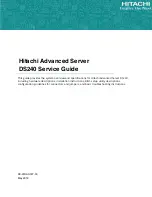
10-8
Cisco SCE 8000 10GBE Software Configuration Guide
OL-30621-02
Chapter 10 Managing Subscribers
Information About Subscribers
Subscriber Files
•
Subscriber Default csv File Format, page 10-8
•
Subscriber Anonymous Groups csv File Format, page 10-9
Individual subscribers, anonymous groups, and subscriber templates may all be defined in csv files. A
csv file is a text file in a comma-separated-values format. Microsoft Excel™ can be used to view and
create such files. The subscriber data is imported into the system using the appropriate CLI command.
The Cisco SCE platform can also export the currently configured subscribers, subscriber templates and
anonymous groups to csv-formatted files.
Subscriber csv files and subscriber template csv files are application-specific. Refer to the relevant
application documentation for the definition of the file format.
Each line in a csv file should contain either a comment (beginning with the character ‘#’), or a list of
comma-separated fields.
Subscriber csv files are application-specific, but a default format is defined by the Cisco SCE, which is
used when the application does not choose to over-ride it. The application might over-ride the format
when additional data is desired for each subscriber or subscriber template. Refer to the relevant Service
Control Application documentation to see if the application defines a different format.
Subscriber template csv files are application-specific. Refer to the relevant Service Control Application
documentation of the file format.
Anonymous groups csv files are not application specific. Their format is described below.
Subscriber Default csv File Format
Each line has the following structure:
name, mappings, packageId
•
Name
—is the subscriber name
•
Mappings
—contains one or more mappings, specifying the Tunnel IDs or IP addresses mapped to
this subscriber. Multiple mappings are separated by semi-colon. Tunnel IDs and IP address/range
cannot be specified for the same subscriber. The following mapping formats are supported:
–
IP address—in dotted decimal notation. Example: 10.3.4.5
–
IP address range—dotted decimal, followed by the amount of significant bits. Note that the
non-significant bits (as determined by the mask) must be set to zero. Example: 10.3.0.0/16.
Example for a bad range: 10.1.1.1/24 (Should be 10.1.1.0/24).
•
PackageId
—the ID of the package to which the subscriber is assigned
Here is an example of a subscriber csv file in the default format:
# A comment line
sub7, 10.1.7.0/24, 1
sub8, 10.1.11.32, 1
sub9, 10.2.22.10, 2
sub10, 10.3.33.10, 2
sub11, 10.4.44.10, 1
sub12, 10.1.11.90; 10.3.0.0/16, 2
















































